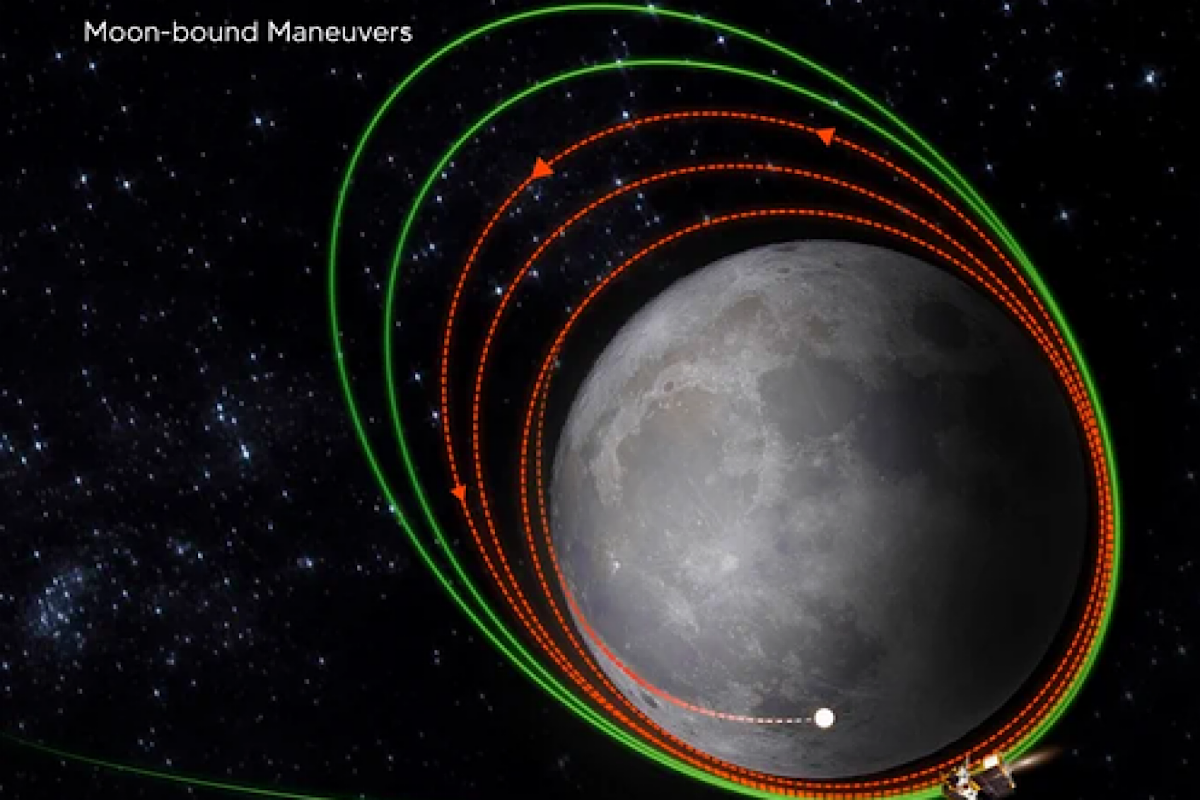Taxing gatekeepers~I
By 2016-17, Facebook had designed a business model that aimed at maximising the ‘user engagement’, that is how much time users spent on their platform, and started collecting data on what they liked and shared.

India’s Chandrayaan-3 gets ready to land on moon the moon (photo: IANS)
The Chandrayaan-3 mission is on schedule and all systems are undergoing regular checks, Union Science & Technology Minister Jitendra Singh announced on Tuesday ahead of its scheduled landing on the moon in the evening tomorrow.
He also shared on X, formerly known as Twitter, the images of the Moon captured by the Lander Position Detection Camera (LPDC) from an altitude of just around 70 km.
Advertisement
The live telecast of the landing operations at MOX/ISTRAC will begin at 5.20 pm on Wednesday, ahead of the scheduled touch-down of the lander with a rover in its belly near the south polar region around 6.04 pm.
Advertisement
It may be recalled that the Vikram lander that was part of the Chandrayaan-2 mission a couple of years back crashed on the moon while it was in the last phase of the landing.
If all goes well as planned on Wednesday, India will become the fourth nation in the world to soft-land on the moon after Russia, the US, and China.
According to ISRO Chairman S. Somanath, the lander will be able to soft-land even if all its sensors and two engines fail.
The Chandrayaan-3 spacecraft comprises a propulsion module (weighing 2,148 kg), a lander (1,723.89 kg), and a rover (26 kg).
Recently, the lander module got detached from the propulsion module and the latter is also circling the moon at an altitude of 25 km x 134 km.
The soft landing is a tricky issue as it involves a series of complex maneuvers consisting of rough and fine braking.
Imaging of the landing site region prior to landing will be done for finding safe and hazard-free zones.
The Indian space agency said the powered descent of the lander will happen from an altitude of 25 km.
The lander will be hurtling at a speed of about 1.6 seconds per km towards the moon, in a horizontal position. The officials seated in the Mission Operations Complex at ISRO Telemetry, Tracking and Command Network (ISTRAC), Bengaluru will remotely apply the lander brakes by reducing the speed in a process called rough and fine braking.
The rough braking will be for about 11 minutes and the remaining will be fine braking.
The lander’s position will be changed to vertical and in that position, the craft will hover over the moon, taking pictures and surveying the landing zone to decide on a safe landing spot.
The lander carries the rover inside it and after safe landing on the moon, the rover is expected to roll down and do the scientific experiments assigned to it.
The primary communication channel will be the Mission Operations Complex at ISTRAC, Bengaluru to Chandrayaan-3 Propulsion Module which in turn would talk to the lander and the rover.
Advertisement